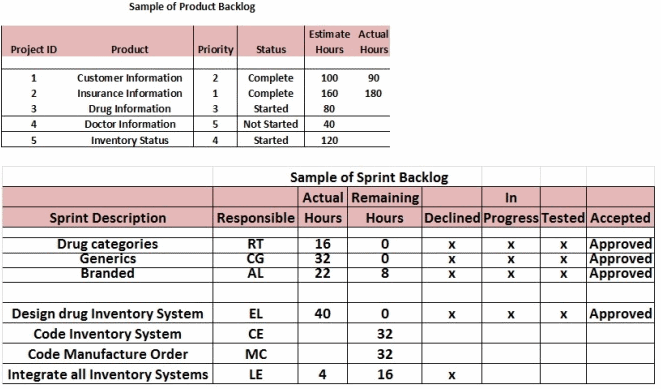After the daily scrum, a sprint review is held for team members to demonstrate the actual work product increments they have built to the product owner and all relevant stakeholders. The product owner solicits any feedback and the owner declares which items are considered “done” and which items need further review or work. Those works that need rework are returned to the product backlog. The sprint review meeting is an opportunity for opportunity to look at and adapt the product as it emerges and iteratively refine key requirements. Those changes to be made to the product are subject to the next meeting.
One of the meetings held at the scrum is a sprint retrospective. This meeting is held to reflect on how well the previous sprint went and identify specific actions that can improve further sprints. The sprint retrospective meeting reflects scrum’s commitment to continuous improvement on both products and team interactions.
Features and activities are monitored and recorded in product and sprint backlogs. The product backlogs is the customer’s prioritized list of key features desired when the project is completed. The product owner is the one that can make changes to the product backlog. On the other hands, the sprint backlog represents the amount of work the team commits to complete the next sprint. It lists the tasks (activities) that must be completed to deliver a functional feature or segment of a feature. Figure 4 shows a partial product backlog and sprint backlog.
Fig 4. |
|
Who are Scrum customers and users?
In developing a system, such as software, customers need to be placed at the forefront during the development process. Customers and clients are the ones who order the information systems, pay for it, and who initially specifies the requirements. Customers might also be users of the information system, those that are directly using the information system and deploying it in operation. The traditional method of would require customers into go through many steps to make changes and these changes had to be documented, which will lead to longer time to response to the changes. Other fields or groups that rely heavily on scrum are the universities, the military (Create link to Scrum website), and the automotive world. Users also include those organizations that depend solely on project execution as part of their strategy to meet the goal and objectives.
Data Gathering In Scrum:
Scrum teams are self-organized and are facilitated by rich communication and a collaborative environment and are usually considered effective for collocated projects with a small team size. Effective leadership of self-managing teams requires strong interpersonal and group process skills as well as external skills of informational seeking and giving, plus the act of negotiation has made scrum process successful. Collaboration tools can play significant role in facilitating the team intensive communication. Agile development such as Scrum requires a daily face-to-face communication with customers and co-workers to understand and fulfill requirements (Lee 2012).
Benefits of Scrum to an Organization:
From the Client Perspective:
- Delivers products more quickly
- Puts the control of the value stream back in the hands of the business
- Allow clients to change priorities and requirements quickly.
From the Management Perspective:
- Enhances customer and client relationships
Next
